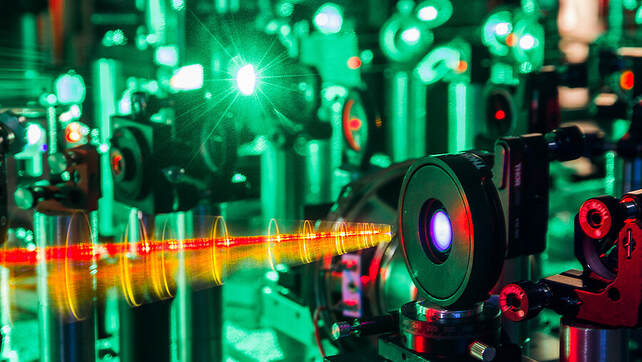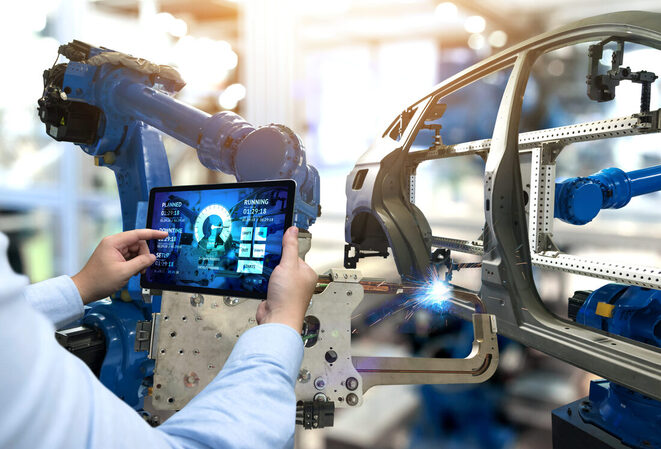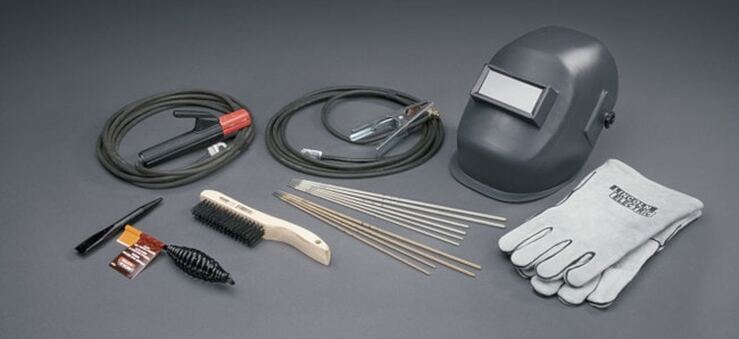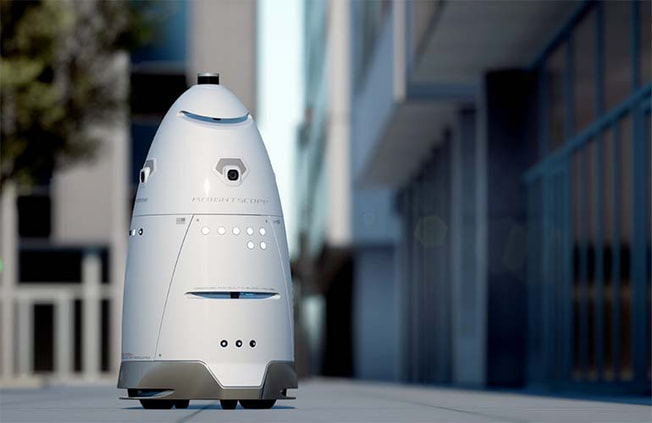|
In the modern era, communication has become an integral part of our lives. From simple conversations to global connectivity, we rely on advanced communication systems to exchange information quickly and efficiently. One technology that is revolutionizing the field of communication is Photonics. With its ability to manipulate light for information transmission, optics is illuminating the path to advanced communication systems.
Optics is the science and technology of generating, controlling, and detecting photons, which are particles of light. It encompasses various fields such as optics, optoelectronics, and fiber optics, and has applications ranging from telecommunications to medicine and manufacturing. Optics plays a crucial role in the development of advanced communication systems by providing high-speed, secure, and reliable data transmission. One of the key areas where optics has made significant contributions is in optical fiber communication. Optical fibers are thin strands of glass or plastic that can transmit information over long distances using light signals. Photonics allows for the manipulation and amplification of these light signals, enabling high-speed data transmission with minimal loss. This has revolutionized the telecommunications industry, allowing for the seamless transfer of vast amounts of data across the globe. In addition to high-speed data transmission, optics also enables secure communication systems. Quantum cryptography, a branch of optics, leverages the principles of quantum mechanics to create unbreakable encryption keys. By using the quantum properties of light, such as photon polarization, it is possible to establish a secure communication channel that cannot be intercepted or hacked. This has immense implications for applications where data security is of utmost importance, such as military communications and financial transactions. Furthermore, Photonics has paved the way for the development of advanced communication networks. Optics integrated circuits (PICs) are compact devices that integrate various optical components onto a single chip. These components include lasers, modulators, detectors, and waveguides. By miniaturizing these components, PICs enable the creation of complex and powerful communication systems in a small form factor. PICs are used in a wide range of applications, including data centers, optical interconnects, and high-speed communication networks. Another exciting area where optics is revolutionizing communication systems is in the field of free-space optics (FSO). FSO utilizes lasers to transmit information through the air instead of using traditional cables or fibers. This technology is particularly useful in situations where physical cables are impractical or impossible to deploy, such as high-altitude communication links or disaster-stricken areas. FSO enables high-bandwidth communication over long distances, offering a flexible and efficient solution for various applications. Moreover, Photonics has enabled the development of advanced imaging and sensing systems that enhance communication capabilities. LiDAR (Light Detection and Ranging) is a prime example of this. LiDAR uses lasers to measure distances and create detailed 3D maps of the surroundings. It has found widespread use in autonomous vehicles, robotics, and virtual reality applications. By providing accurate and real-time spatial information, LiDAR enhances communication between machines and their environment, enabling safer and more efficient operations. Optics is playing a vital role in advancing communication systems. By harnessing the power of light, Photonics enables high-speed data transmission, secure communication channels, and the development of advanced communication networks. It has opened up new possibilities in optical fiber communication, quantum cryptography, photonic integrated circuits, free-space optics, and imaging and sensing systems. As the demand for faster, more secure, and reliable communication continues to grow, optics will continue to illuminate the path towards advanced communication systems, shaping the future of connectivity and information exchange.
0 Comments
Machine Condition Monitoring: Enhancing Operational Efficiency through Predictive Maintenance7/3/2023 In today's rapidly evolving industrial landscape, maximizing operational efficiency is crucial for businesses to remain competitive. One area where companies can significantly improve efficiency is through the implementation of Machine Condition Monitoring and predictive maintenance strategies.
By leveraging advanced technologies and data analysis techniques, organizations can proactively identify potential equipment failures, minimize downtime, and optimize maintenance schedules, leading to increased productivity and cost savings. Machine Condition Monitoring involves the continuous monitoring and analysis of various parameters such as vibration, temperature, pressure, and oil analysis to assess the health of machinery. Traditionally, maintenance practices have relied on scheduled inspections and reactive repairs. However, these approaches can be costly, time-consuming, and often result in unexpected breakdowns and production interruptions. By contrast, predictive maintenance utilizes real-time data and analytics to predict equipment failures before they occur, allowing for proactive maintenance actions. One of the key benefits of Machine Condition Monitoring and predictive maintenance is the ability to identify early signs of deterioration or malfunction. By monitoring key performance indicators, anomalies can be detected and analyzed to determine potential issues. For example, changes in vibration patterns can indicate bearing wear, while abnormal temperature fluctuations may suggest motor or cooling system problems. By addressing these early warnings, maintenance teams can intervene before major failures occur, minimizing unplanned downtime and preventing costly repairs. Predictive maintenance also enables organizations to optimize their maintenance schedules. Instead of relying on fixed intervals or manufacturer recommendations, maintenance activities can be planned based on the actual condition of the equipment. By analyzing historical data and patterns, organizations can determine the optimal time for maintenance, maximizing equipment availability and minimizing disruptions to production. This approach ensures that maintenance resources are allocated efficiently, reducing costs associated with unnecessary inspections and repairs. Furthermore, Machine Condition Monitoring and predictive maintenance can extend the lifespan of equipment. By addressing minor issues promptly, organizations can prevent them from escalating into more significant failures that could result in irreparable damage. Regular monitoring and maintenance can also help identify opportunities for equipment upgrades or modifications, enhancing performance and efficiency. By extending the useful life of machinery, businesses can achieve a higher return on investment and reduce capital expenditure on replacement equipment. The advent of Industry 4.0 and the Internet of Things (IoT) has significantly enhanced the capabilities of Machine Condition Monitoring and predictive maintenance. IoT-enabled sensors can be installed on machinery to collect real-time data, which is then transmitted to a centralized monitoring system. Advanced analytics and machine learning algorithms can analyze this data, identify patterns, and generate predictive models for equipment behavior. These models can provide insights into potential failures, enable condition-based maintenance decisions, and facilitate continuous improvement of maintenance strategies. Machine Condition Monitoring and predictive maintenance offer tremendous opportunities for enhancing operational efficiency in today's industrial landscape. By leveraging real-time data, advanced analytics, and IoT technologies, organizations can proactively identify and address potential equipment failures, optimize maintenance schedules, extend equipment lifespan, and reduce costs associated with unplanned downtime. Embracing these strategies enables businesses to move away from reactive maintenance practices, improve productivity, and maintain a competitive edge in a fast-paced and ever-evolving market. As technology continues to advance, Machine Condition Monitoring and predictive maintenance will play an increasingly critical role in the optimization of industrial operations. In the world of metal fabrication and construction, precision and quality are paramount. To achieve seamless results and durable structures, professionals rely on high-performance Welding Equipment. Among the leading names in the industry, Precision Fusion stands out as a trusted provider of top-notch welding equipment for professionals.
With a commitment to excellence and a focus on meeting the specific needs of professionals, Precision Fusion has become synonymous with precision welding solutions. Their range of cutting-edge equipment and accessories empowers welders to achieve outstanding results in their projects while ensuring safety and efficiency. One of the key factors that sets Precision Fusion apart is their dedication to innovation. Their team of experienced engineers and designers consistently push the boundaries of welding technology to develop state-of-the-art equipment. By staying at the forefront of advancements in the industry, Precision Fusion ensures that professionals have access to the most advanced tools available. Precision Fusion offers a comprehensive range of Welding Equipment, catering to various welding techniques and applications. Whether it's MIG, TIG, or stick welding, professionals can find the perfect equipment to suit their specific needs. Each piece of equipment is meticulously designed and manufactured to deliver exceptional performance, durability, and ease of use. One of Precision Fusion's flagship products is the Precision Welder Pro, a versatile MIG welder that combines power, precision, and control. With advanced features such as adjustable voltage and wire feed speed, welders can fine-tune their settings to achieve optimal results for a wide range of materials and thicknesses. The Precision Welder Pro also incorporates advanced safety features to protect both the welder and the workpiece, including overheating protection and a built-in gas leak detector. For those in need of precise and intricate welds, Precision Fusion offers the Precision TIG Master. This advanced TIG welder boasts exceptional arc stability, allowing professionals to create clean, high-quality welds on stainless steel, aluminum, and other metals. With features like adjustable pulse frequency and AC/DC capability, the Precision TIG Master provides unmatched control and accuracy for even the most demanding applications. In addition to their Welding Equipment, Precision Fusion also provides a wide range of accessories and consumables to enhance the welding experience. From high-quality welding helmets with auto-darkening lenses to durable welding gloves and electrodes, professionals can rely on Precision Fusion to equip them with everything they need to excel in their work. Precision Fusion's commitment to customer satisfaction extends beyond the quality of their products. They also prioritize exceptional customer service, offering prompt assistance and technical support to address any queries or concerns. Their team of knowledgeable professionals is readily available to provide guidance and ensure that customers make the most out of their Precision Fusion equipment. As a testament to their dedication to excellence, Precision Fusion has earned the trust and loyalty of countless professionals in the welding industry. Welders, fabricators, and construction experts rely on Precision Fusion's equipment to deliver outstanding results and elevate their craftsmanship. Precision Fusion stands as a premier provider of top-notch Welding Equipment for professionals. With their commitment to innovation, exceptional performance, and unwavering customer support, Precision Fusion continues to empower welders to achieve precision and quality in their work. Whether it's a large-scale construction project or a delicate fabrication task, Precision Fusion's range of cutting-edge equipment ensures that professionals have the tools they need to excel in their craft. In recent years, the world has witnessed a rapid advancement in technology, with artificial intelligence (AI) playing a pivotal role in various industries. One particular sector where AI has made significant strides is security. Traditional security measures are being revolutionized by the emergence of Security Robots, autonomous machines equipped with advanced surveillance and threat detection capabilities. These robots are becoming an integral part of securing the future, offering unparalleled levels of efficiency, effectiveness, and reliability.
The primary advantage of robots lies in their ability to perform repetitive and mundane tasks tirelessly, reducing the burden on human security personnel. These robots are designed to patrol designated areas, monitor surveillance feeds, and detect potential security threats in real-time. Equipped with high-resolution cameras, infrared sensors, and advanced image recognition algorithms, they can identify and track suspicious activities with remarkable accuracy. Whether it's a break-in attempt, unauthorized access, or an unusual behavior pattern, robots can swiftly identify and report the incident to the appropriate authorities, enabling a prompt response. Another key feature that sets Security Robots apart is their constant vigilance. Unlike human security guards who may experience fatigue or distractions, these machines operate 24/7 without compromising their alertness. This round-the-clock surveillance ensures that no security breach goes unnoticed, enhancing the overall safety and protection of a facility. Furthermore, robots can be programmed to respond to specific events or alarms, instantly investigating the source of the disturbance and providing crucial information to guide the response efforts. The versatility of robots is also worth highlighting. These machines are not limited to indoor environments but can be deployed in a wide range of settings, including industrial facilities, warehouses, airports, shopping malls, and even public spaces. They can navigate complex terrains, including staircases and uneven surfaces, using advanced mobility systems such as wheels, tracks, or even drones. By patrolling large areas and monitoring multiple locations simultaneously, Security Robots can cover more ground than human guards, significantly reducing response times and enhancing the overall security infrastructure. Privacy concerns are an essential consideration when discussing robots. However, the technology has evolved to address these concerns effectively. Most robots are equipped with privacy protection features, such as anonymization of recorded video footage and adherence to strict data encryption protocols. Furthermore, they can be programmed to avoid recording sensitive areas, respecting individuals' privacy rights while still maintaining a robust security posture. One of the significant advantages of Security Robots is their ability to integrate with existing security systems and technologies. These robots can communicate and exchange information with other devices, such as surveillance cameras, access control systems, and alarm systems. This integration enables a seamless flow of data, allowing security personnel to have a comprehensive overview of the security status and respond to incidents more effectively. The ability to analyze data in real-time and provide actionable insights empowers security teams to make informed decisions and implement proactive security measures. While robots are undoubtedly transforming the security landscape, they are not meant to replace human security personnel. Instead, they complement and enhance their capabilities, allowing humans to focus on more complex and strategic tasks. The combination of human expertise and the technological prowess of security robots creates a synergy that maximizes the overall security posture and provides a safer environment for everyone. The rise of robots signifies a remarkable shift in the way we approach security. These machines offer unparalleled efficiency, effectiveness, and reliability in patrolling, surveillance, and threat detection. With their tireless vigilance, adaptability to various environments, and integration with existing security systems, Security Robots are securing the future by providing an extra layer of protection and empowering human security personnel to respond swiftly and effectively to security incidents. As technology continues to advance, we can expect robots to become even more sophisticated, revolutionizing the way we safeguard our homes, workplaces, and public. |
AuthorWrite something about yourself. No need to be fancy, just an overview. Archives
July 2023
Categories
All
|




 RSS Feed
RSS Feed
